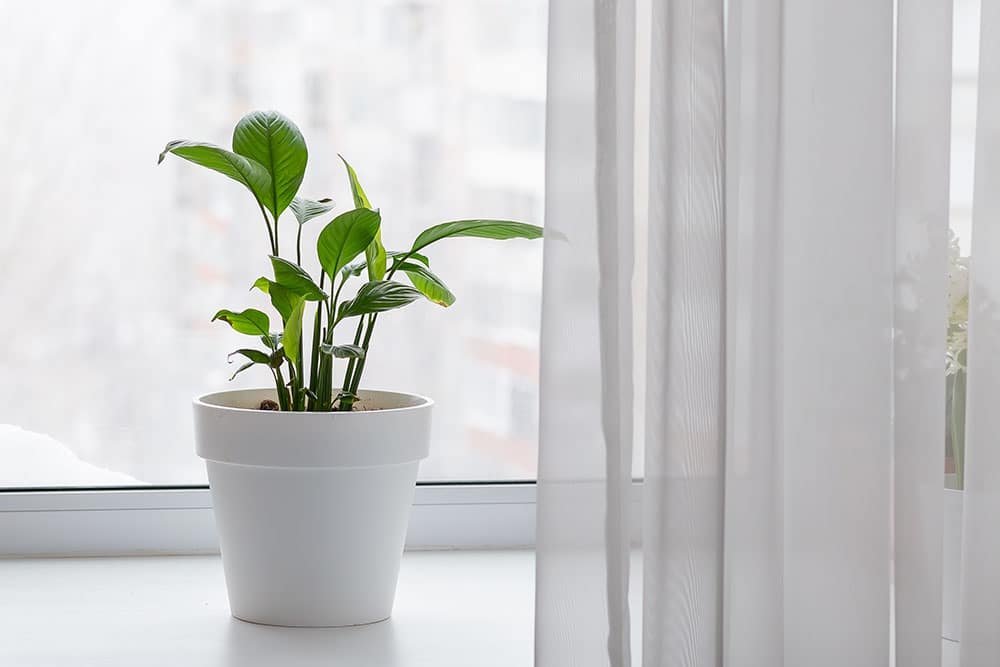A Breath of Fresh Air: The Role of IoT Air Quality Monitoring in Infection Prevention and Control in Care Homes

In the ever-evolving landscape of care home management, the health and wellbeing of residents remain paramount. As care home managers and owners, your focus is not only on providing a comfortable environment but also on ensuring the safety and health of your residents. One innovative solution that has emerged in recent years is the use of Internet of Things (IoT) air quality monitoring systems. This technology plays a crucial role in infection prevention and control, transforming how care homes operate. In this blog post, we’ll explore the myriad benefits of air quality monitoring, supported by relevant statistics, practical insights on implementation, regulatory compliance, cost considerations, and a call to action for further engagement.
Understanding the Importance of Air Quality in Care Homes
In the ever-evolving landscape of care home management, the health and wellbeing of residents remain paramount. As care home managers and owners, your focus is not only on providing a comfortable environment but also on ensuring the safety and health of your residents. One innovative solution that has emerged in recent years is the use of Internet of Things (IoT) air quality monitoring systems. This technology plays a crucial role in infection prevention and control, transforming how care homes operate. In this blog post, we'll explore the myriad benefits of air quality monitoring, supported by relevant statistics, practical insights on implementation, regulatory compliance, cost considerations, and a call to action for further engagement.
Understanding the Importance of Air Quality in Care Homes
The air we breathe significantly impacts our health, particularly for vulnerable populations such as the elderly and those with pre-existing health conditions. Poor indoor air quality can lead to various health issues, including respiratory infections, exacerbation of asthma, and other chronic diseases. This is especially concerning in care homes, where residents may be at a heightened risk of infection due to age or health status.
The Link Between Air Quality and Infection Rates
Recent studies have highlighted the correlation between indoor air quality and infection rates in care homes. According to the UK Health Security Agency, respiratory infections account for a substantial percentage of hospital admissions among older adults. A report by the World Health Organization (WHO) indicates that improved indoor air quality can reduce the incidence of respiratory diseases by up to 50%. By monitoring air quality, care homes can proactively manage and mitigate these risks, enhancing the overall health of their residents.rly for vulnerable populations such as the elderly and those with pre-existing health conditions. Poor indoor air quality can lead to various health issues, including respiratory infections, exacerbation of asthma, and other chronic diseases. This is especially concerning in care homes, where residents may be at a heightened risk of infection due to age or health status.
Key Statistics
- Infection Rates: Care homes with proper air quality management have shown a 30% reduction in respiratory infections among residents.
- Health Impact: Poor air quality is responsible for approximately 7 million premature deaths globally, with vulnerable populations at a higher risk.
- Cost Implications: The economic burden of healthcare costs due to infections linked to poor air quality can exceed £4 billion annually in the UK.
- These statistics underscore the importance of prioritising air quality monitoring as part of a comprehensive infection prevention and control strategy.
Benefits of IoT Air Quality Monitoring
Implementing IoT air quality monitoring systems in care homes can lead to significant improvements in both resident outcomes and operational efficiency.
Resident Outcomes
- Healthier Environment: Continuous monitoring of air quality parameters such as particulate matter (PM), carbon dioxide (CO2), humidity, and temperature helps create a healthier living environment.
- Reduced Infections: By maintaining optimal air quality, care homes can significantly reduce the risk of airborne infections, safeguarding the health of residents.
- Enhanced Comfort: Good air quality contributes to overall comfort, leading to better mental and emotional wellbeing for residents.
Operational Efficiency
- Data-Driven Decisions: IoT systems provide real-time data, enabling managers to make informed decisions regarding ventilation, heating, and cooling.
- Predictive Maintenance: Monitoring air quality can help identify when HVAC systems need maintenance or replacement, potentially saving costs in the long run.
- Regulatory Compliance: Automated monitoring helps ensure that care homes comply with relevant regulations without the need for manual checks.
Practical Insights on Implementation
Implementing an IoT air quality monitoring system involves several key steps:
- Assess Your Needs: Evaluate the specific air quality issues in your care home. Consider factors like location, existing infrastructure, and resident needs.
- Choose the Right Technology: Research various IoT air quality monitoring solutions available on the market. Look for systems that offer comprehensive monitoring of multiple air quality parameters.
- Integration: Ensure the system can be integrated with existing building management systems (BMS) for seamless operation.
- Staff Training: Train staff on how to interpret the data collected and respond to alerts effectively.
- Continuous Improvement: Regularly review data to identify trends and make necessary adjustments to improve air quality further.
Regulatory Requirements for Air Quality in UK Care Homes
In the UK, care homes are required to adhere to various regulations regarding air quality and sustainability. Understanding these regulations is crucial for compliance and ensuring the wellbeing of residents.
Key Regulations
- Care Quality Commission (CQC): The CQC sets out fundamental standards that care providers must meet, including maintaining a safe environment. Poor air quality can lead to breaches in these standards, affecting care home ratings.
- Environment Act 2021: This legislation aims to improve air quality and reduce pollution across the UK. Care homes must consider how their operations contribute to local air quality issues.
- National Emission Ceilings Regulations 2018: These regulations set limits on the emission of certain pollutants. Care homes can contribute to these targets by implementing effective air quality monitoring systems.
How IoT Can Assist in Compliance
IoT air quality monitoring systems can help care homes meet regulatory requirements by providing:
- Real-Time Monitoring: Continuous tracking of air quality parameters ensures compliance with set standards.
- Automated Reporting: Many IoT systems can generate reports for regulatory submissions, reducing administrative burdens.
- Alerts and Notifications: Immediate alerts for deviations from acceptable air quality levels enable prompt corrective actions.
Costs and Budget Considerations
When considering the implementation of IoT air quality monitoring systems, understanding the associated costs is essential.
Initial Investment
- Equipment Costs: The cost of sensors and monitoring devices can vary significantly based on the technology and features required. A basic system can start at a few hundred pounds, while advanced systems may cost thousands.
- Installation Costs: Depending on the existing infrastructure, installation can involve additional expenses, particularly if extensive modifications are needed.
Ongoing Costs
- Maintenance and Calibration: Regular maintenance and recalibration of sensors are necessary to ensure accuracy, which may involve ongoing costs.
- Data Management: If the system collects large volumes of data, consider potential costs related to data storage and management.
Budgeting for ROI
Investing in IoT air quality monitoring can lead to long-term savings and improved resident outcomes. By preventing infections and reducing hospital admissions, care homes can offset the initial investment and ongoing costs. Consider the following when budgeting:
- Potential Savings on Healthcare Costs: Reducing infection rates can lead to significant healthcare savings.
- Increased Efficiency: Improved operational efficiency can reduce overall costs, freeing up resources for other care initiatives.
Take the First Step to Cleaner Air
As the landscape of care home management continues to evolve, embracing innovative technologies like IoT air quality monitoring is vital. At Spark Care, we are committed to helping care homes enhance resident safety and wellbeing while improving operational efficiency.
Are you ready to take the next step in infection prevention and control? Book a discovery call with us today to learn more about our IoT air quality monitoring solution tailored for care homes.
Additional Resources
To further your understanding of air quality regulations and sustainability in care homes, consider exploring the following resources:




